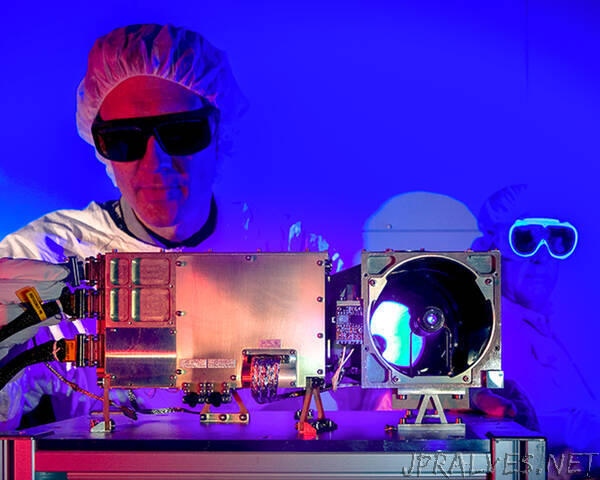
“On the one-year anniversary of the Perseverance rover’s landing, here’s a look back at some of the discoveries the Los Alamos-led instruments have helped make.
The SuperCam (on the Perseverance rover) and ChemCam (on Curiosity) instruments are tools that use lasers to search for the chemical signs of past life on Mars.
Perseverance, which landed on Mars one year ago today (Feb. 18), and the Curiosity rover, which landed in 2012, have been busy exploring the Red Planet and helping researchers better understand its potential for ancient microbial life.
Developed at the Laboratory, the two instruments on the rovers recently hit an impressive milestone: They’ve fired more than one million laser shots combined. ChemCam has zapped its laser 885,000 times; SuperCam has fired more than 115,000.
The instruments use a technique called laser-induced breakdown spectroscopy (LIBS) to zap rocks to create a plasma, and then collect the light from that plasma to understand what elements are present on the planet’s surface.
In honor of Perseverance’s “landiversary” — as well as the instruments reaching the million-shot mark — here’s a look back at some of the amazing discoveries made over the years.
SuperCam on Perseverance
Flash floods
Although it’s been on Mars for only a year, SuperCam has already helped the Perseverance mission make groundbreaking discoveries. In 2021, SuperCam played a key role in finding that massive flash floods once washed over Mars.
“We recorded high-resolution color images of all of the samples we shot with the SuperCam laser, and the resulting images provided important context for our LIBS interpretations,” said Sam Clegg, the Lab’s principal investigator for SuperCam.
The images from SuperCam showed evidence of delta and flood deposits in Jezero Crater on Mars, indicating that there were flash floods as well as periods of relative stability. The images taken will also help the Perseverance mission decide where to collect samples that will eventually be returned to Earth for analysis.
ChemCam on Curiosity
Manganese
In 2016, ChemCam observed high levels of manganese oxides on Mars, which could indicate that higher levels of atmospheric oxygen once existed there. This hint of more oxygen in Mars’ early atmosphere added to other Curiosity findings — such as evidence of ancient lakes — revealing how Earth-like Mars may have once been.
“We know from Earth’s geologic record that the appearance of manganese in rocks was the result of an increase in oxygen in the atmosphere, which was the direct result of photosynthetic life,” said Nina Lanza, principal investigator for ChemCam. “Finding similar manganese minerals on Mars raises intriguing questions about whether the Martian atmosphere may have once contained more oxygen than it does today.”
Ancient lakes
In 2019, ChemCam helped reveal that the surface of Mars was once home to shallow, salty ponds that went through episodes of overflow and drying. An analysis of rocks enriched in mineral salts in Gale Crater showed that the climate on Mars was not as stable as once thought; there were very wet periods and very dry periods.
Powering the rovers
To have dependable power to explore the frigid surface of Mars, the Curiosity and Perseverance rovers are equipped with a type of power system called a radioisotope thermoelectric generator (RTG). An RTG is essentially a nuclear battery that uses heat from the natural radioactive decay of plutomium-238 to generate electricity.
The missions on Mars cannot always rely on solar power, particularly when they are far from the Sun or when dust storms block the Sun from ever reaching the rovers. RTGs provide long-lasting power that works no matter how far out a spacecraft is. Listen to a previous episode of Mars Technica on RTGs here.
What’s next?
Curiosity’s primary mission was supposed to last about two years. More than 10 years later, the rover is still going, collecting data from new areas. ChemCam will continue to support the mission for as long as the rover lasts. SuperCam will continue to provide researchers with LIBS analysis for the Perseverance mission for at least another year during the primary phase of the mission.
The million laser shots between ChemCam and SuperCam have told a complex story of long-lasting liquid water on the surface of Mars; one of the next million zaps just might find the smoking gun for past life on Mars.”
